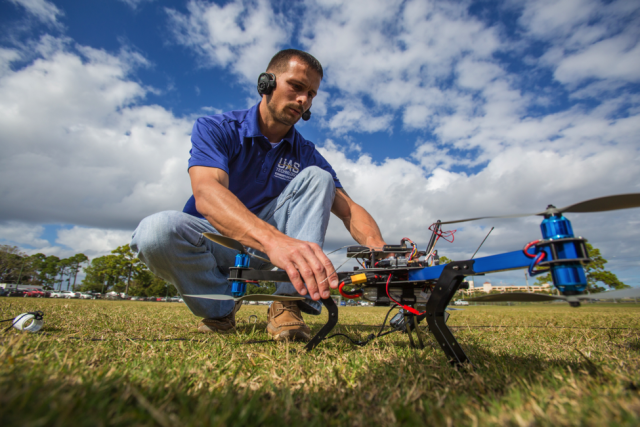(Source: arstechnica.com)

Tasked with expediting the town’s recovery and preventing future devastation, the state of Kansas allotted funding to various emergency response initiatives: debris removal, reconstruction of roads and buildings, and—less traditionally—the study of unmanned aircraft systems (UAS) operations. In other words, Kansas spent money to study drones. (The term “drones” is generally avoided by commercial aviators and academics given its connections to the military and surveillance services.)
Though born of a specific regional need, the state’s academic investment reflects a nationwide trend: the rise of Bachelor of Science degrees in operating UAS. The beneficiary of the Kansas disaster money, Kansas State University (K-State) Salina, is one of the first three US universities to offer an undergraduate degree in UAS operations. The University of North Dakota introduced a major in Unmanned Aircraft Systems Operations in 2009, while Florida aeronautical university Embry-Riddle’s B.S. in Unmanned Aircraft Systems Science debuted in 2011.
The scope of commercial applications for UAS has broadened dramatically in recent years. Enhanced techniques in filmmaking, environmental monitoring, and photography, as well as high-profile ideas such as Amazon’s 30-minute delivery service, have increased the need for skilled UAS operators.
“Unmanned aircraft systems is like the Wild West of aviation,” said John Robbins, assistant professor in the Aeronautical Science Department at Embry-Riddle. “It’s a brand-new area, and we know that these aircraft are going to be a component of the future of aviation.”
Most programs begin with courses in flight background and instruction: FAA regulations, the systems and circuit design of unmanned aircraft, remote sensors, aerodynamics, ground tools, robotics. These are combined with applied projects, such as building aircraft from plans or kits, flying unmanned aircraft in simulated environments, and field-operations courses complete with an air vehicle operator, an external pilot, and a visual observer.
Continue Reading at arstechnica.com…
Alan is serial entrepreneur, active angel investor, and a drone enthusiast. He co-founded DRONELIFE.com to address the emerging commercial market for drones and drone technology. Prior to DRONELIFE.com, Alan co-founded Where.com, ThinkingScreen Media, and Nurse.com. Recently, Alan has co-founded Crowditz.com, a leader in Equity Crowdfunding Data, Analytics, and Insights. Alan can be reached at alan(at)dronelife.com